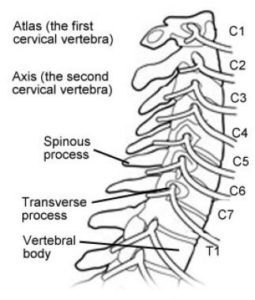 The alignment of the spine is the core of chiropractic care. Knowing and understanding the overall health of your spine can be determined by examining the cervical curve. The cervical spine consists of the first seven vertebrae in your spine, starting from the base of your skull at the C1 (atlas) vertebra and ending at your thoracic spine.
The alignment of the spine is the core of chiropractic care. Knowing and understanding the overall health of your spine can be determined by examining the cervical curve. The cervical spine consists of the first seven vertebrae in your spine, starting from the base of your skull at the C1 (atlas) vertebra and ending at your thoracic spine.
This is a problem area for many people and depending on the curve of your cervical spine, you may experience some painful symptoms. In between every vertebrae is a disc which acts as the “shock absorber” of the spine. When the incorrect natural curve of the neck is lost, the discs and joints may experience greater loaded pressures.
What kind of curve do you have?
There are four different types of curvatures in the cervical spine—all of which can be determined through an X-ray.
Lordotic (“C” shaped curve) This is a normal, healthy curvature in the neck. Think of it as a c-shaped curve that faces the opposite way your nose points.
Hypolordotic aka straight neck This means that there is a decreased curve or no curve in the neck. In an X-ray, the neck may look straight.
Reverse Curve/Kyphotic This is a reverse curve—and the kind of curve you want to stay far, far away from. This means that your neck has completely lost its healthy curve and is now curving the opposite direction, connecting your thoracic and cervical curves.
“S” Curve The hardest curve to correct, the “S” curve is when the spine has both a lordotic and kyphotic curve.



Leave A Comment
You must be logged in to post a comment.